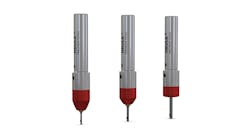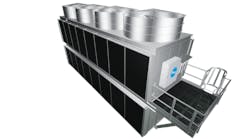A: I would need more information about what you are forging to give firm advice. For example: If you forge with very light reductions as a last operation, you could experience some ‘blown’ grain sizes after final solution treatment. This would be true if the final forging reductions take place below the recrystallization temperature for the alloy. The normal forging temperatures for the alloys mentioned are above 800°F. Forging at much lower temperatures could lead to such problems if the final reductions are small.
In the situation you described, if you were to coin the forgings at say 600°F (below recrystallization) then the light reductions could lead to the abnormally coarse grain sizes. This is especially true for the 6061 grade.
The key ingredient in grain size control after heat treating is the level of hot reductions performed beforehand. For example, if you were to forge a part having a tapered configuration from a thin, slab-like preform, the regions that have experienced the largest reductions would likely be less prone to the blown grain condition.
Conversely, the regions of the forging that receive only 5-10% thickness reduction could be expected to experience abnormal grain growth, which can result in rough surfaces.
This is also the condition that can cause the reductions in tensile elongation values. The ductilities are the most affected properties. The basic strengths of either alloy are not greatly affected by the enlarged grain sizes.
For more than 40 years H. James Henning held key technical positions in the forging industry, including as director of technology for the Forging Industry Association, and as president of Henning Education Services, a Columbus, OH, firm specializing in customized education and training in forging technologies.
Guidelines and recommendations offered in this column are based on information believed to be reliable and are supplied in good faith but without guarantee. Operational conditions that exist in individual plants and facilities vary widely. Users of this information should adapt it, and always exercise independent discretion in establishing plant or facility operating practice.









